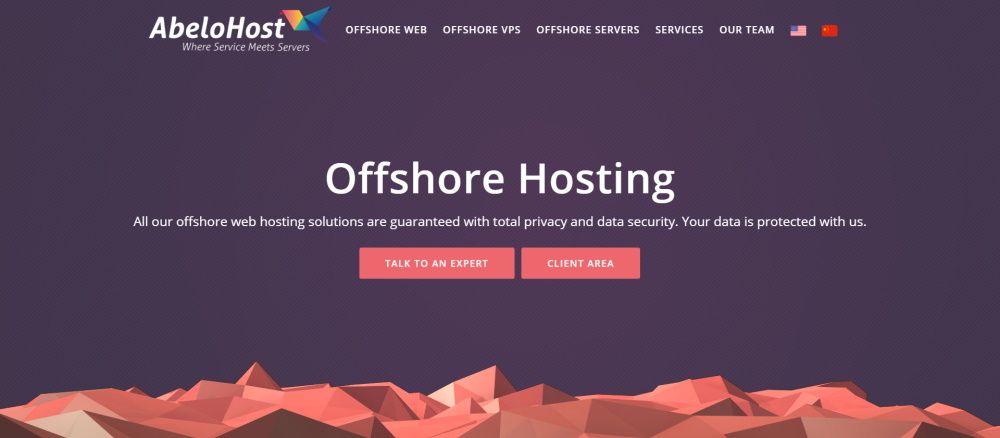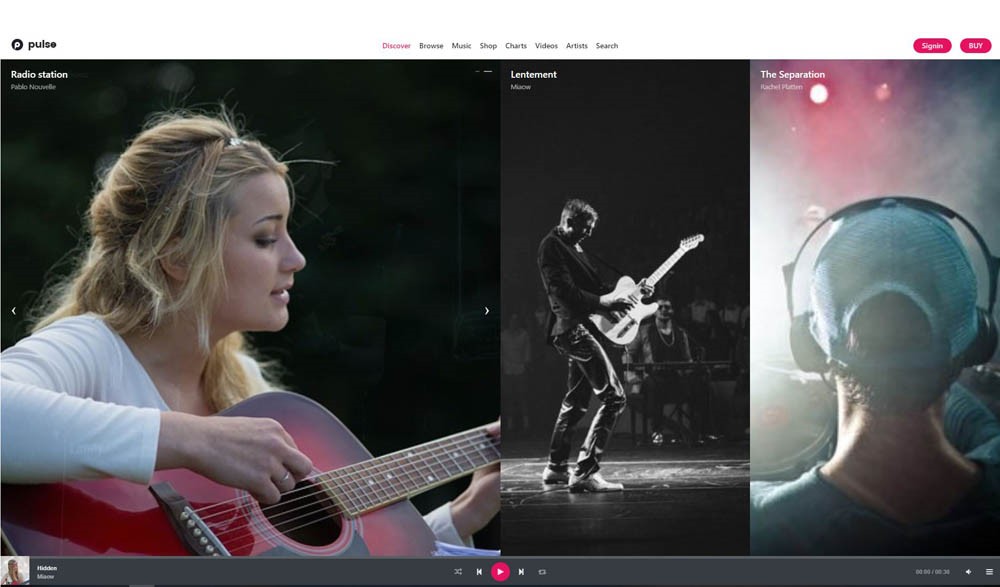Why start a music streaming website
There’s no doubt about it — music streaming websites are as prevalent as they ever were. In fact, they’re gaining more attention with each passing day, especially since there’s a constant demand for high-quality audio content. Suffice it to say that now is the perfect time to jump on the bandwagon (in more than one sense) and create your own music streaming site.
The music streaming revenue amounted to $11,509 million in 2019 and reached $12,435 million in 2020. The same stat suggests that the annual growth rate of 5.7% will result in an industry worth $15,520 million by 2024.
Midia Research goes even further than that and forecasts an industry worth $45.3 billion in 2026. Midia is a data analysis and research company that specializes in the relationship between media and technology. Certainly, that makes them a credible source in predicting the future of music streaming.
They are not alone in their generous predictions, however. Goldman Sachs published an elaborate overview of the current and upcoming music streaming trends. It shows a revival of interest for the music industry in general, with streaming occupying the most prominent position. According to them, the music streaming industry will be worth a little under $38 billion in 2030.
What all these forecasts show, despite differing in their estimations, is a constant growth of the industry. Music streaming is becoming increasingly popular and is the preferred mode of music consumption.
Podcasts

We can say the same thing about podcasts. Right now, there are more than 900,000 active podcasts. This number shows the ever-growing interest in audio content that is available on the go. In fact, the smartphone is the number one device that people use to follow podcasts, mostly while doing something around the house or driving.
It would be correct to say that podcasts come in video form as well and that they’re quite popular. However, Nielsen podcast insights show that over 61 million households in the US alone have at least one fan of music podcasts. This takes us back to the original point — people want more audio content.
Subscription Surge
Another point that Goldman Sachs makes in the overview that we’ve already mentioned above is a surge in subscription numbers. Now more than ever, avid music fans are subscribing to online platforms that offer music streaming to their customers.
Subscription-based services such as Spotify and Apple Music have seen an upward swing in the number of customers. Spotify, for example, has seen a spike in user numbers from three million in 2011 to 87 million in 2018.
So what is causing consumers to subscribe to music services like never before? Goldman Sachs offers an answer to that question as well. It would seem that it’s a generational thing. Millennials and Gen Z are more willing to pay for annual subscriptions than their predecessors.
To Sum Up
You don’t have to be a master in economics to see that music streaming hosting is a lucrative business. All data points to a bright future for the entire industry, with music streaming as its crown jewel.
This information should help you decide whether you should start a music streaming website or not. All these statistics should alleviate any doubts you might have about diving into the prospect of being the next SoundCloud.
Now that you know streaming music is an excellent idea, it’s time to move on to the technical aspects involved. You will learn in detail how to start a music streaming service and how to build a music streaming website. But first, you should take a look at the following important considerations and give them proper thought.
Video and Music Streaming

The rest of this article will be dedicated to music streaming only, as opposed to streaming both video and audio. It will teach you how to start a music streaming service like Soundcloud or Spotify. So if you’re intent on making use of videos on your website, you’re better off reading about how to start a video streaming website.
It might seem like there is no substantial difference between the two. Both require a steady stream of data packets to your device, right? Well, due to movie and TV show windowing, licenses for such content are much more difficult to obtain. If you want to create your own music streaming site, there are far fewer hoops to jump through.
Then there’s the technical side of the coin. Scripts, themes, and accompanying features that are suited for a music streaming website do not go well with sites that show videos as well.
Regular and Offshore Hosting
“I want to start my own music streaming service, but I don’t know where to begin.”
If you’re not sure how to build a music streaming website, you’re not alone. We hear this very often, and it’s quite a reasonable thing to wonder about. It’s the most important matter to take into consideration before learning how to build a music streaming website.
Offshore hosting means employing the services of hosting providers outside the country where you’re located. That doesn’t mean you should pick any random country to create your own music streaming site, however. Some places, like the Netherlands, simply have laxer laws that allow your business to run smoothly and without hindrances.
By that, we’re referring to the protection against DMCA claims that will occur if you don’t plan on purchasing licenses. Companies like AbeloHost provide flexible content policies, anonymity, and ignore copyright claims. That way, your website is bound to live through attempted takedowns and you get to keep doing business.

Most “regular”, or onshore, hosting companies do not provide such a level of protection. But this is not where the differences between regular and offshore companies end.
Oftentimes, offshore hosts are located in countries with better access to cutting-edge technology. That way, they’re able to provide you with far more bandwidth and storage space than regular hosts. Suffice it to say that you’ll need plenty of both if you want to create your own music streaming site.
The takeaway is this: offshore companies provide superior bandwidth and storage space, reliable technical support, and plenty of security. If you don’t want to pay for licenses, offshore hosts are also your only choice.
Since we’re talking about music streaming websites, a good recommendation is to start with an offshore VPS hosting. With it, you’ll have access to all the bandwidth you could possibly need. And as we’ve already established, if you want to create your own music streaming site, you’ll need plenty of it!
How to Start a Music Streaming Service

By this point, you’ve probably realized the importance of offshore hosting and that it’s the most suitable option for you. When the time comes, all you’ll need to do is choose the best offshore hosting to suit your website’s needs.
Now, onto the matter at hand — we’ll show you how to create a music streaming website. The entire process might appear daunting if you’re going through it for the first time. But if you follow the steps laid out here and plan your businesses accordingly, it will be completely painless.
Without further ado, this is how to start a music streaming website of your own:
- Choose a domain name
- Pick a hosting provider
- Pick a CMS
- Decide on a theme
- Build the website
- Start adding content
- Optimize, market, and monetize
By following each of these steps carefully, you’ll learn how to start a music streaming service worthy of industry giants. We’ll go into detail about each of the steps, making sure you’re able to make informed decisions by yourself.
Choose a Domain Name
The discussion about how to build a music streaming website has to begin with choosing a proper domain name. By “proper” we mean a name that is going to be representative of what your business is all about. Just like a street name and a number describe a location, so does the domain for your website.
Besides being a unique identifier for your music streaming website, a great domain name is also descriptive. A domain name should tell your customers that your website has something to do with streaming music. In other words, it should be intuitive and also easy to remember, so avoid cryptic abbreviations.
With that said, before you create your own music streaming site, you should contact a domain name registrar. A registrar is a company that has permission to sell a domain name, and offshore hosts usually offer this service among others. The offshore hosting provider should be your go-to for any questions related to domain names and extensions.
Speaking of offshore hosting companies, the better ones will delay domain suspension in case of a complaint. Regular hosting providers often immediately shut down a website without even notifying the owner when they receive a complaint. Minimized domain suspension is a trait of reliable offshore hosts, so that’s something to keep an eye out for.
Finally, don’t forget to renew your domain name after you create your own music streaming site. As it often happens, website owners forget to renew the domain name when it expires (usually after a year). The name then falls into wrong hands and it can get quite expensive to reclaim.
Pick a Hosting Provider

Buying a license for the content you’d like to upload to your website can be unbelievably expensive. For most new businesses, it’s downright impossible to pay all the fees necessary for you to run a streaming website.
Unless you’re looking to invest a fortune into a new business and don’t mind covering all the licensing costs, DMCA claims are going to be a fact of life for you. Record labels will try and take down all content that legally belongs to them that they haven’t been reimbursed for.
If you want to know how to start your own music streaming service without overpaying for licenses, think offshore hosting. As we’ve previously mentioned, offshore hosts can provide protection and security against DMCA claims. They achieve this thanks to liberal laws and regulations specific to the countries where they’re located.
Exceptional offshore hosts can offer you the following:
- Protection against copyright claims
- Superb bandwidth and storage space
- Domain name registration
- Anonymity
- High-end security
- SSD VPS hosting
- Experienced technical support
- Flexible content policy
These are some of the most important things to consider when choosing your offshore hosting provider. More than anything, great hosting providers like AbeloHost will help you along the way and make the experience as hassle-free as possible. With a reliable hosting company at your side, you can create your own music streaming site without fear of takedowns.
You don’t necessarily need VPS hosting during the initial stages of your website’s existence. Shared hosting will suffice at first, but as your site begins to grow, so do the hardware requirements. That’s when you’ll need to employ the power of VPS hosting to your advantage and upgrade the hardware that your booming website relies on.
Pick a CMS

Content management system, or CMS for short, is a software or a set of programs that make the process of managing a website much easier. A CMS usually contains a user-friendly interface that allows you to manage your website without having to work on the code directly. This allows people of all technical levels to be fully independent in running their website. If you’re not sure how to build a music streaming website, these systems will do it for you.
Seeing how practical and powerful these systems are, you could correctly assume that there are plenty to choose from. With a CMS at your side, you can manage all the media, such as audio files, or control user access. You’ll be able to set up the website to your liking without ever touching the code directly.
While there are many control management systems to choose from, WordPress will benefit your website the most. It powers more than a third of all websites on the internet and owns 60% of the market share.
We recommend WordPress as the perfect audio streaming solution that allows you to easily create your own music streaming site. As it allows for easy media management, it will make uploading content and designing your website that much easier.
WordPress is a powerful open-source software that has the capacity to single-handedly manage your website. It will most certainly give you an edge in competing against music streaming websites that don’t use it.
After everything we’ve had to say about it, you must be wondering how and where to start using it. The answer is, again, your offshore hosting provider. Most hosting companies allow their clients to make use of WordPress hosting, so make sure to check with your provider.
Decide on a Theme

If you’re not sure how to start a music streaming service, take a look at themes. Themes allow for easier customization of your website when you create your own music streaming site. You can have a fully designed music streaming site in no time, without developing anything yourself.
All you have to do is buy a theme designed specifically for WordPress, PHP, or HTML — take your pick.
Besides aiming for a specific programming language, you should also think about appearance. After all, it’s precisely the visuals that these themes affect, so go for something that feels as unique as possible.
Moreover, it’s important to remember that we’re all used to sleek-looking websites nowadays. Get a design that’s elegant and pleasing to the eye, but is also functional and intuitive at the same time. Themes are the answer to the question of how to build a music streaming website.
Build the Website
Building a website is not as difficult as it used to be. Advanced technical knowledge is not a requirement anymore, and you can build your very own website without writing a single line of code. How to make a website like SoundCloud? It’s easy! Use one of the scripts that imitate or clone the design of SoundCloud.
Of course, you’d like a website that’s unique and unlike any others that came before it. Unfortunately, that would require a team of experts and a lot of money. While preexisting themes are not as original as you would hope, they’re an excellent trade-off between uniqueness and price.
And since there are literally hundreds of themes and scripts to choose from, you’ll surely find one you enjoy. The best music streaming website scripts and templates are fully automated, customizable, and completely responsive. They also allow users to create libraries and playlists and have a built-in music player with shuffle and repeat functions.
Start Adding Content
Now that you have a good-looking, fully operational website, it’s time to actually do what you set off to do — upload some music. While you could upload all the music by yourself, it would require you to have a lot of audio files. In fact, it’s highly unlikely that you will have enough content to upload all on your own.
Instead, you could opt for a platform access model that best suits the needs of your website. Generally, the two most common models used by successful music streaming websites are:
- Community Access Model. The perfect examples would be SoundCloud or YouTube Music.
- Branded Access Model. This is more in line with what Spotify and Apple Music are doing.
If you choose the community access model, you’ll be running a piece of real white label music streaming business. That way, everyone can upload songs to your website, making them available to all users on the platform. Audio files will be pouring in from all over, constantly increasing the volume of your streaming service.
On the other hand, the branded access model involves purchasing streaming rights from record labels. Then, they’re the ones doing all the uploading to your platform. Obviously, this option is far more costly than simply letting the public upload the content by themselves.
As the volume of your platform expands, the need for VPS hosting and all the valuable storage space becomes greater.
Optimize, Market, and Monetize
Optimize

Optimization of a website can mean a lot of things and affect certain aspects such as performance, SEO, and accessibility. It’s the next vital step to take after you create your own music streaming site
Since our topic is streaming websites, the most important optimization should be the accessibility of your website on smartphones. They are the number one device used to access music streams, meaning your website should work impeccably on them.
Think about features such as data savers that allow smartphone users to gain even more out of your website by using caches.
Market

It’s completely up to you to decide how you’re going to approach marketing. Regardless of how amazing your new music streaming website is, it needs attention to grow.
Luckily, social media takes care of this part. If you’re not sure how to approach marketing, there are others that can do it for you. Perhaps finding a digital marketing agency to do the work for you is the most prudent move.
Monetization
Finally, we get to the part that makes it all worthwhile — monetization. As is the case across the internet, ads and subscriptions are the two main monetization options.
You could keep the service free for your users and rely on ads as the main source of revenue. This is a proven method that many services (both music-related and otherwise) employ.
The immediate advantage of such a monetization model is that you offer a free service to millions of potential customers. If you offer even slightly better service than some subscription-based competitor, you will attract a significantly larger customer base. According to many website owners, this is how to start a music streaming service and truly make it.
Advertisers love large customer bases and always look for the opportunity to reach new audiences. However, when they run out of money — so do you. During tough economic times, advertisers have less money to pay you with. And without a steady income from subscriptions, that could spell trouble.
The alternative to running ads is the subscription model. When customers pay regularly for a service, you have a more steady and reliable way to generate revenue. There’s no risk of advertisers pulling out or paying you less due to economic crises.
However, the downside is pretty steep. With a paid subscription model, you will not attract nearly as many consumers as you would otherwise. That eliminates the prospect of attracting advertisers at a later time, but the potential for customer loss is still present. Moreover, you need a secure system to process customer payments and protect their privacy. And such security does not come cheap.
Gauge both the pros and cons carefully before coming to a conclusion. But remember that the ads model is much better for new websites.
Features

Think about all the features that you’d personally like to see in a music streaming website. Sometimes, we take these quality-of-life features for granted, but without them, streaming music would be far less interesting. Some of them include:
- Track searching
- Music categories
- Daily mixes
- Account system
- Rating tracks (stars or like/dislike)
- Favorites
- Creating playlists
- Assisted playlisting
- Collaborative playlists
- Sharing tracks and playlists
- Ability to download tracks for offline use
Music streaming is about more than just listening to music whenever you feel like it. It’s also about sharing, rating it, and organizing it in a personalized fashion. Each feature that users want and that you add puts you one step above the competition. However, the opposite also holds true. Each feature you miss puts you at an immediate disadvantage.
Conclusion
This is how to make a music streaming website. We’ve given you all the tools necessary to create a Spotify clone from scratch if you want to. Or perhaps you’re more interested in being the owner of the next SoundCloud.
In any case, following the guidelines we’ve provided here will set you up with your very own music streaming website. Find a reliable offshore host, register a domain name, and customize your new site to your heart’s content. You’ll have a fully functioning website in no time.
After that, it’s up to you to promote and advertise your new pride and joy. Let everyone know that the next contender for the title of the ultimate music streaming website has arrived.




























